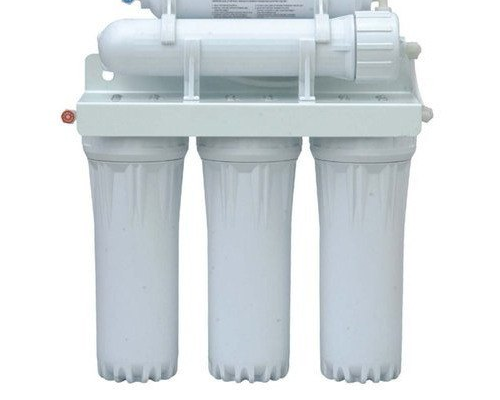
It can be frightening to learn that you have been diagnosed with cancer. One may feel emotional distress and other difficulties after receiving the news. These unpleasant situations can sometimes make it necessary to change our lifestyles to reduce the risk of developing the disease. Our cancer prevention plan generally includes the following:
- Healthy eating means avoiding junk food
- Stop smoking, stop drinking (or just not start)
- Limiting our exposure to sunlight and toxic chemicals
Our tap water may be hiding a valuable resource that could secretly increase our cancer risk.
We often have confidence that the water we get from the tap is safe and clean. It could be that state and local officials constantly assure us that tap water is safe to drink. Even tap water that meets federal standards can still contain complex mixtures of contaminants. Some of these may pose a significant risk of cancer.
The Environmental Working Group (EWG), a group of scientists, found that tap water contains 22 carcinogens. This could increase the risk of developing cancer for 100,000 Americans over a lifetime. The majority of cancer risk comes from arsenic and disinfection byproducts.
The United States is known for having one of the safest public water supplies in the world. However, Americans can get cancer from tap water. Let’s now look at the potential health effects of certain contaminants found in tap water, as well as how to remove them from your drinking water.
Arsenic
Arsenic, a toxic chemical element, is found in soil and rocks. It is basically a byproduct of mining, coal-burning, and copper smelting. This chemical compound is a major cause of cancer in the United States. It is especially prevalent in Southwest cities such as Scottsdale, Tucson, Los Angeles, and Los Angeles.
Natural deposits of arsenic in the ground, as well as industrial and agricultural pollution, can all lead to arsenic entering our water supply. It can slowly get into groundwater that is used for drinking water if it is found in the ground or on the surface. Private wells could have high levels of arsenic due to arsenic-containing fertilizers or industrial waste.
Every year, thousands of pounds of arsenic are released into the environment by certain industries in the United States. It is no surprise that arsenic was detected in taps of 107,000,000 Americans between 2015 and 2017. A national study of groundwater quality found that the compound was also present in almost half of wells taken from parts of aquifers that are used for drinking water supply.
You will most likely experience a similar fate if you decide to switch to bottled water. Consumer Reports discovered that 11 of the 130 brands of bottled water tested contained dangerous levels. Six had 3 parts per billion (ppb).
The federal standard for arsenic content in bottled water is now 3 ppb. Consumer Reports stated that current research shows that arsenic levels above 3 ppb are dangerous for long-term ingest. The EPA has also established a 10 ppb limit for arsenic exposure in public drinking water in the United States. Nevertheless, arsenic levels have been detected in private wells and public water systems (which are not monitored by the EPA) that exceed this limit.
It is almost impossible to recognize arsenic without a test. The compound can cause brain damage in children and congenital disabilities. It also increases the risk of developing cancer and diabetes. According to the EWG, 100,000 cases of cancer could be caused by drinking tap water containing arsenic or other carcinogens. But don’t worry. In this article, we’ll show you how to get rid of them.
Nitrate
High levels of nitrate can pose a danger to your health, particularly for pregnant women and infants. It is found naturally in soil and air. However, it can also be found in fertilizers used in yards, golf courses, and agricultural production. The chemical’s widespread use in agriculture is causing havoc in the quality of drinking water in many areas of America.
Nitrate is primarily introduced to water supplies through agricultural and urban runoff, wastewater treatment plant discharges, and septic systems. Nearly half of all nitrogen used by farms is used to pollute groundwater and surface water. The result is that the concentrations of nitrate are expected to rise further in our water systems.
An environmental advocacy group claims that millions of tons of nitrates are released each year from industrial farming into America’s drinking waters, leading to thousands of cases of cancer and other health problems. Private wells also contain nitrate. Private well water is not monitored by the federal government. Therefore, homeowners are responsible for testing the water in their own wells.
Drinking water with high levels of nitrate has been linked to bladder, colon, and kidney cancers. The EWG estimates that the chemical is responsible for 12600 cases of cancer per year. Although the risk is different from one region to another, small farming communities are at the highest risk because of the high levels of nitrate in their water.
The EPA recommends a limit of 10 mg/L for nitrate in water. The EWG, however, has set a health guideline for the chemical at 5mg/L based on research by scientists from the National Cancer Institute and other independent investigators. These guidelines are thought to help protect against cancer and other health hazards. In 2015, however, 7 million Americans drank tap water containing more than 5 mg/L.
Although the odds of your water having nitrate levels above the recommended guidelines are very high, it is not necessarily a dire situation. We’ll show you how to get rid of nitrates and other potentially cancer-causing contaminants in your water, as promised. We are certain you will want to stay for that.
Disinfection Byproducts
Chlorinating water can kill bacteria and other organisms responsible for waterborne diseases like cholera or typhoid. Although chlorine is practical, inexpensive, and simple to use, recent concerns have grown about the safety of adding toxic chemicals to drinking water.
Chlorine can react with organic compounds in water and produce disinfection byproducts (DBPs). This is the main problem with chlorine. DBPs can cause cancers in the bladder, liver, kidneys, and intestinal.
Research shows that the effects of trihalomethanes, a major component in DBPs found in chlorine-treated water (THMs), can be significant. Because they are vaporized at lower temperatures, inhaling THMs is more hazardous than eating them. Showering with chlorinated water may increase your exposure to toxic byproducts.
The most common THM compound in chlorinated water is chloroform. It has been identified as possibly carcinogenic to humans. It can cause cancer in some organs and cells, as well as damage other cells in laboratory animals. While it is difficult for scientists to directly assess the impact of THMs on humans, there are some studies that indicate that THMs can increase the risk of bladder cancer and intestinal, anal, and esophagus problems, as well as other reproductive health complications such as low birth weight and abortion.
The Centers for Disease Control and Prevention recommends 4 milligrams of chlorine per liter as a safe level. The EPA also has science-based regulations that limit certain DBPs in drinking water, particularly THMs and haloacetic acid. Scientists discovered that those who have been drinking chlorinated water for more than 15 years had a greater chance of developing colon cancer.
What Can We Do To Get Rid Of Potential Carcinogens In Drinking Water?
Tap water is generally safer than bottled water. Because bottled water has less regulation than tap water, tap water is safer. The EPA standards for clean water are met by most public water systems. The EPA standard does not allow for the evaluation of all contaminants at once, so the EWG did not predict that 100,000 cases of cancer could be possible.
You can reduce your cancer risk by finding out the source of your drinking water. Then, purchase and install a water filter that will eliminate these contaminants.
Bottled water is not a cheaper option, even though you might think so. You’ll probably end up spending more money on bottled water over time than you do on tap water. Additionally, arsenic has been found in bottled water sold by Whole Foods and Walmart. This means that it’s impossible to guarantee that bottled water is free of contaminants.
A water filter is your first line of defense against carcinogenic contaminants in your drinking water. It doesn’t matter if it comes from a private or public well. First, identify the contaminants in your water. This will allow you to find the right filter to target and eliminate them.
A water testing kit is the best way to test for contaminants in drinking water. You can also request a copy of your local water provider’s annual water quality report. The report includes information about the levels and types of chemicals in the water. If you want to get more precise results, you can send water samples from your tap to a laboratory for testing.
Your best options for water filtering if your water contains cancer-causing chemicals are:
- Reverse osmosis water filtration system: Reverse-osmosis filters have a reputation for removing contaminants from water that other filters cannot. Reverse osmosis water filters are designed to treat water at a single faucet. This is why they are called “point-of-use (POU)” filters. Paragon Water offers the best reverse osmosis systems to remove cancer-causing contaminants. The systems both use a 4-stage process to remove harmful pollutants from water. This includes lead, mercury, and chloramine.
These and other Paragon Waters Solutions water filter systems come with a lifetime warranty, a six-month money-back guarantee, and free shipping. You can also finance the system with monthly payments that are affordable for up to one year if you don’t have enough money upfront.
Last Thoughts
Water pollution is often mentioned as a cause of many illnesses, including cholera, typhoid, and diarrhea. We never imagined cancer would be on that list. It can be very difficult to deal with cancer. You must avoid any possible causes, such as drinking contaminated water. Paragon Waters Solutions offers a high-quality water filtration system that will filter your water.
This post was written by a water treatment expert at Paragon Water Systems. Paragon Water Systems is a water filter supplier. We know that the best product comes from the best materials. We manufacture home water solutions such as reverse osmosis systems, under sink water filtration systems, showerhead filtration systems, carbon cartridges, and a wide variety of other products. Our focus is to provide Americans with safe and clean water throughout the home













